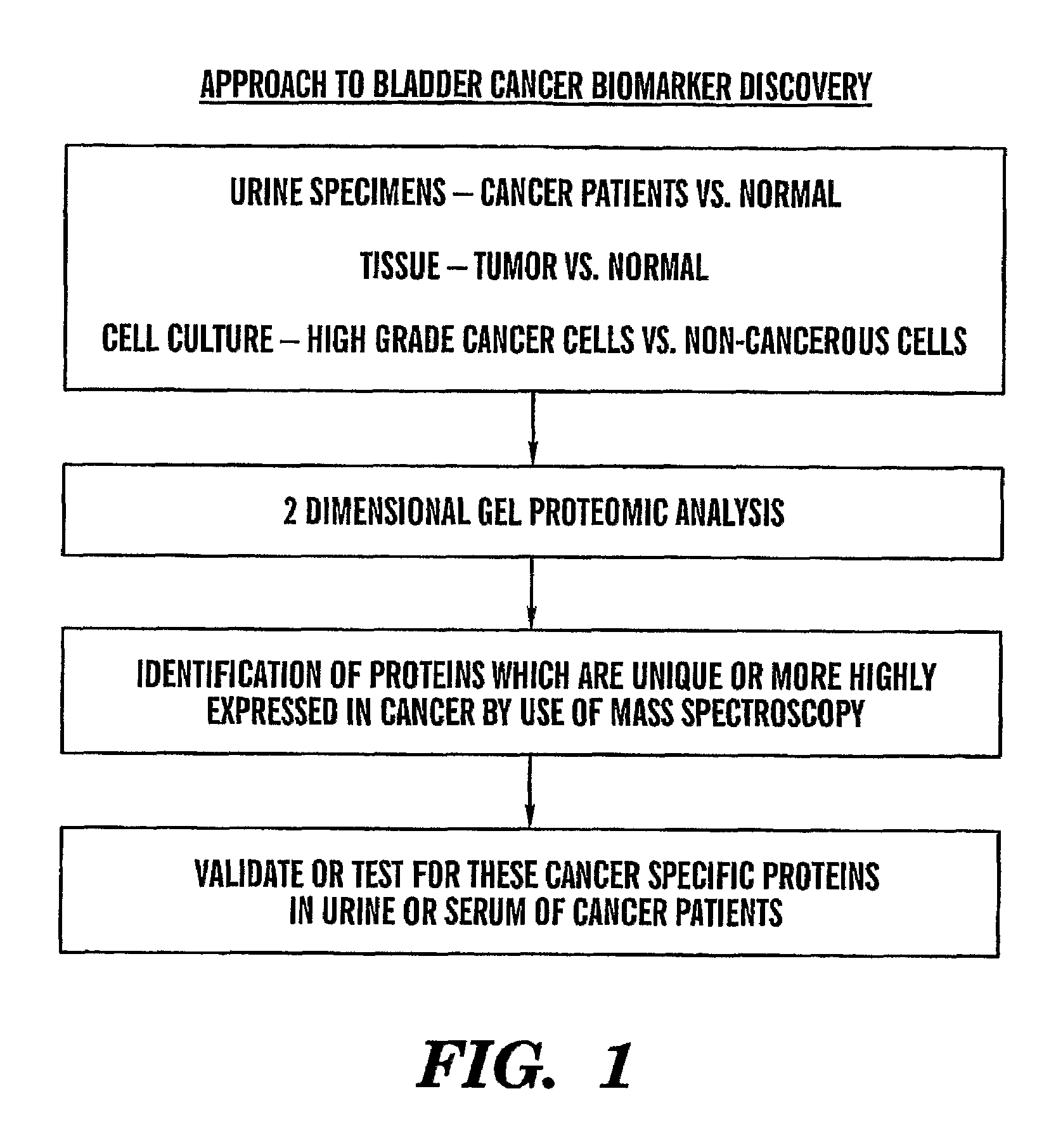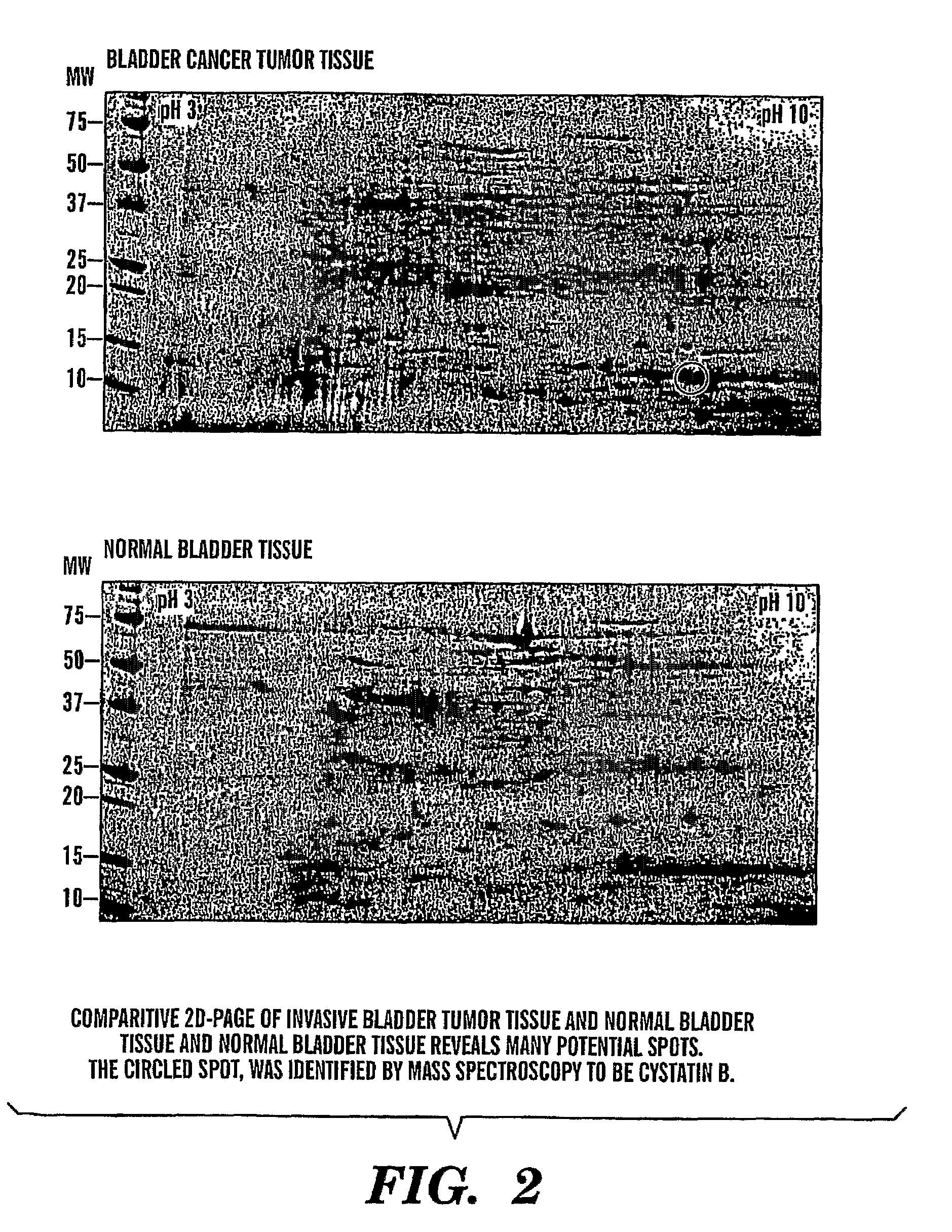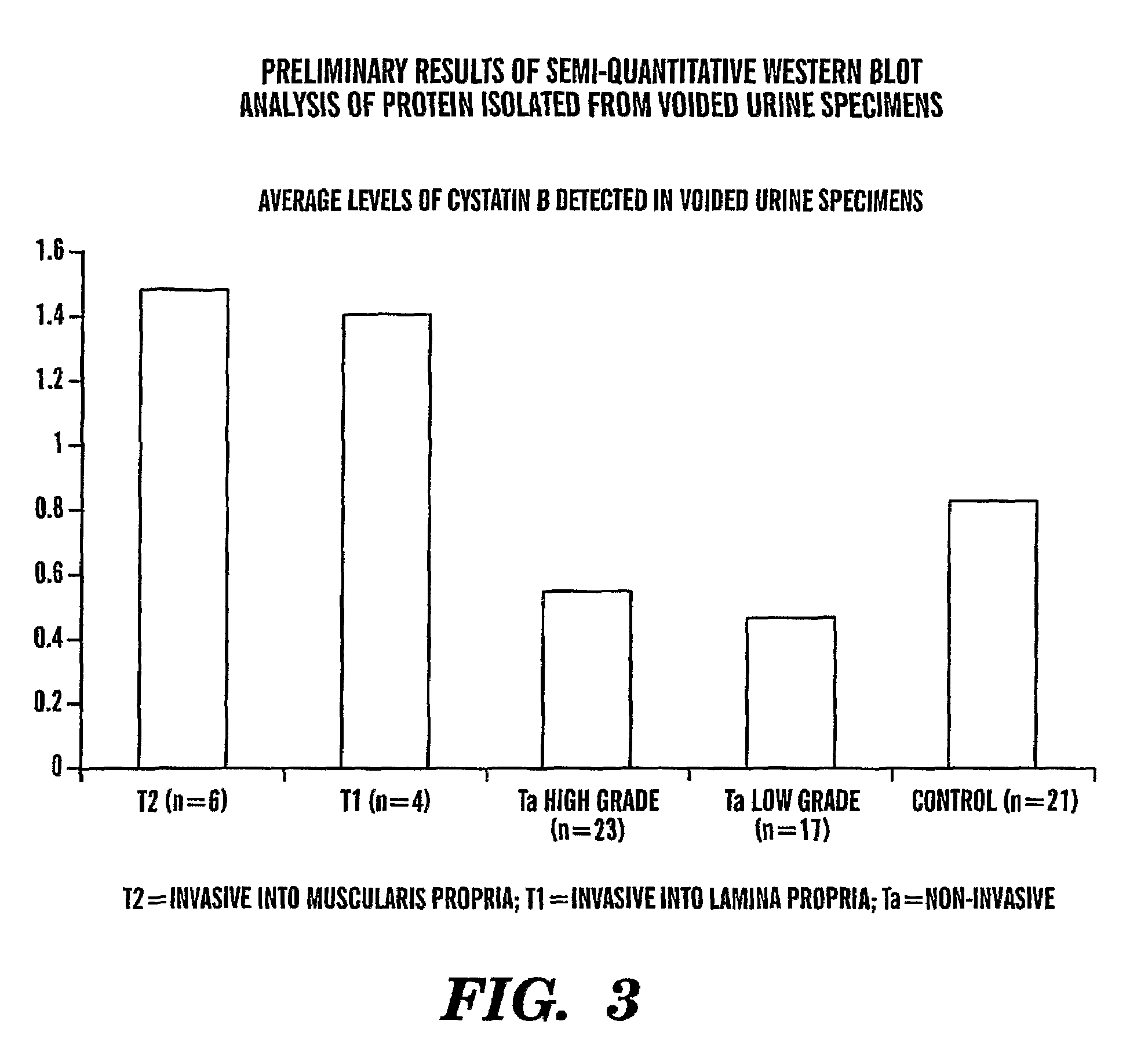Method for diagnosis and prognosis of epithelial cancers
a cancer and epithelial technology, applied in the field of epithelial cancer diagnosis and prognosis, can solve the problems of limited options, inconvenient use, and clinicians still have a difficult time predicting which tumors will metastasize to other organs, and achieve the effects of convenient diagnosis of cancer, quick, easy and sa
- Summary
- Abstract
- Description
- Claims
- Application Information
AI Technical Summary
Benefits of technology
Problems solved by technology
Method used
Image
Examples
example 1
Proteomic Analysis of Voided Urine, Bladder Cancer Tissue and Cell Lines for Biomarker Discovery in Transitional Cell Carcinoma
Introduction
[0088]There is a need for new biomarkers to aid in the diagnosis and management of cancers of epithelial origin. Urine can serve as an excellent medium for epithelial cancer biomarker discovery and analysis. Proteomic analysis by two-dimensional polyacrylamide gel electrophoresis (2D PAGE) is one effective tool to analyze the proteome of human specimens. We utilize 2D PAGE to analyze voided urine, human bladder tumor and normal tissue, and human derived bladder cancer cell lines as a method for biomarker discovery.
Methods
[0089]Under IRB approved protocol, we collected voided urine specimens from sixty-three patients prior to diagnostic cystoscopy with biopsy and twenty-two age-matched control patients with no clinical evidence of bladder cancer and no history of malignancy. Total urinary protein was isolated and quantified. Equivalent amount...
example 1i
Immunostaining for Cystatin B in Bladder Cancer Tissue
Methods
[0095]Normal bladder and bladder cancer tissue were immunostained using mouse monoclonal anti-cystatin B antibody and counterstained with Haematoxylin. Immunostaining was performed using the bladder cancer tissue microarray BL801 (US Biomax Inc, Rockville, Md.). The tissues were deparaffinized, endogenous peroxide blocked in 3% hydrogen peroxide in methanol, and microwave antigen retrieval performed using Antigen Unmasking Solution. Blocking was performed using 5% normal horse serum and endogenous biotin blocked using Avidin / Biotin kit. Tissue was incubated with mouse monoclonal anti-cystatin B / Stefin B antibody, clone A6 / 2 (GeneTex, Inc, San Antonio, Tex.), followed by anti-mouse biotinylated secondary antibody, amplified using ABC kit, and developed using DAB. Tissue was counterstained using Gill's Hematoxylin #3 (Sigma-Aldrich, St. Louis, Mo.), and blued using Tacha's Bluing Solution (Biocare, Concord, Calif.). All reag...
PUM
| Property | Measurement | Unit |
|---|---|---|
| mass spectrometry | aaaaa | aaaaa |
| PSA | aaaaa | aaaaa |
| physical | aaaaa | aaaaa |
Abstract
Description
Claims
Application Information
 Login to View More
Login to View More - R&D
- Intellectual Property
- Life Sciences
- Materials
- Tech Scout
- Unparalleled Data Quality
- Higher Quality Content
- 60% Fewer Hallucinations
Browse by: Latest US Patents, China's latest patents, Technical Efficacy Thesaurus, Application Domain, Technology Topic, Popular Technical Reports.
© 2025 PatSnap. All rights reserved.Legal|Privacy policy|Modern Slavery Act Transparency Statement|Sitemap|About US| Contact US: help@patsnap.com



